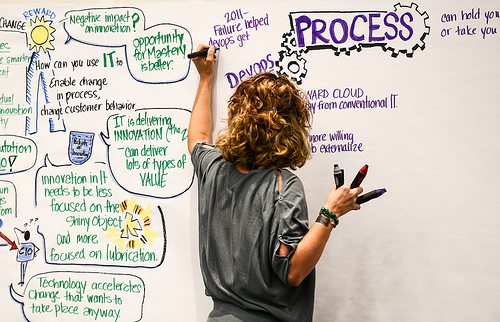This post has already been read 13878 times!
When compared to the rest of the supply chain, transportation has been relatively resistant to change and innovation. With a few exceptions, the industry operates much as it did 10 or even 20 years ago. What I want to explore today is why this the case, and more importantly, what can we do about it?
Until now, transportation has largely been untouched by innovation for two reasons. First is the inherent multi-party nature of the business. Even the simplest transportation scenario has three parties—shipper, the consignee, and the transportation provider. The problem is that traditional technology systems are not designed to manage multiple parties at the same time. For example, your TMS might help you manage your own operations, but shippers and consignees have their own separate systems that are creating plans and managing transactions. The result is three different versions of the truth—which causes problems. The second reason for the lack of technological progress is that logistics and transportation providers remain siloed away from the rest of the supply chain, leaving them with little sense for what is going on upstream or downstream. Stale data leads to stale results.
This is where a many-to-many network enters the picture. Unlike the enterprise systems that are in use today (e.g. TMS), a many-to-many network is designed at the outset to be cross-functional and manage transactions and processes from multiple companies’ perspectives rather than one; the big payoff being that entire communities of trading partners can coordinate their planning and operations around the same demand signal within the same system. Thus, to go back to our example above, instead of the shipper, the consignee, and the transportation provider operating independently of one other, the network captures and translates consumer demand into order forecasts, transportation plans, material requirements, and operations plans for each party as appropriate. The result is transportation providers are directly synced to its immediate trading partners, and more importantly, the end consumer.
Seems far-fetched, doesn’t it? Yet in practice transportation has always been an integral part of the wider supply network, it’s just that no technology could reflect this reality. I’ve observed transportation providers slowly move from paper logs, to in-cab computers, to in cab network devices, to today’s cell phones and handhelds. Almost everything in transportation claims to be “networked” in some way nowadays, but the real value comes from a many-to-many network that fully breaks down the remaining walls between transportation and the rest of the supply chain.
For a simple example of how a many-to-many network adds value, consider how we currently deal with inbound collect shipments. Today we really don’t know where they’re coming from without manually looking it up (e.g. 214 matching)—an inefficient and error prone process. In contrast, because a many-to-many network contains both the supplier’s PO and the BOL, we know instantly. This might seem basic to you, but consider how even this simple feature requires tying together information from procurement, finance, shipping, and the factory floor; very difficult to do without a multi-party network. No wonder innovation has been slow to come!
- The 4PL Revolution Roundup: Top 8 Opportunities for Today’s Logistics Providers - December 15, 2015
- Demand Sensing Round-Up (Blog Posts, White Papers, and Webinars!) - December 15, 2015
- Your Favorite Posts of 2015 - December 4, 2015

